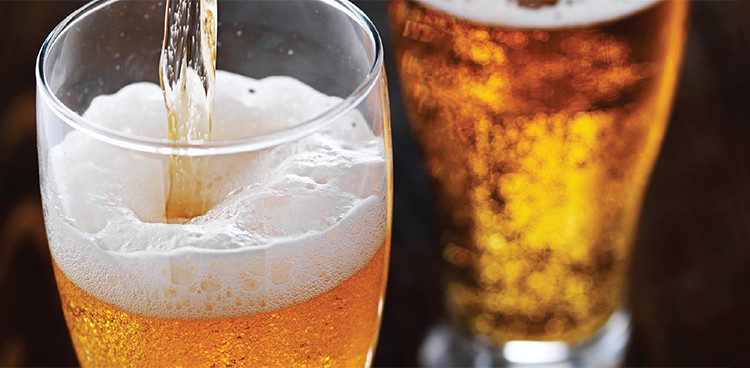
Cream ale can be confounding, even to the most seasoned beer drinker. To start, it doesn’t contain dairy. And while the beer is classified as an ale, it’s cold-fermented like a lager. All told, cream ale is both a category-flouting misfit and a rare creature in this country: an American original.
During the early brewing days in the United States, ales reigned supreme, particularly those with English heritage. Around the mid-19th century a new wave of European immigrants arrived with lagers and pilsners; crisp, refreshing counterpoints to the widely consumed and quick-to-spoil British-influenced quaffs, they quickly gained traction.
To compete with these popular newcomers, American ale makers turned to a tasty alternative. Perhaps inspired by Germany’s Kölsch (an ale conditioned at lager temperatures), numerous Northeast and mid-Atlantic brewers started fermenting their beers at cooler temperatures. The process dampened any fruity notes in the yeast, creating a brisk, clean, supersmooth beer with pleasant malt sweetness.
The regional specialty, which never spread farther west than Ohio, persevered through Prohibition. By the 1970s and 1980s, however, cream ale fell on hard times, just maintaining a grip with such budget brands as Cincinnati’s Little Kings Cream Ale and New York’s Genesee Cream Ale. The style seemed ready for an epitaph, but there was a detour on the way to the graveyard.
Craft brewers have embraced cream ales in recent years, using ale yeast and cold fermentation as a framework, then adding personal touches. Some adhere to tradition, as Thomas Hooker Brewery and Fullsteam Brewery do with their subtly sweet Blonde Ale and corn-fueled El Toro, respectively. Others veer off course: San Diego’s Ballast Point Brewing Company, for one, infuses Calm Before the Storm with vanilla cold-brew coffee, while in Syracuse, N.Y., Empire Brewing Company serves its cream ale on nitrogen, the gas that gives Guinness its silky luster.
More and more, hops are making an appearance, as in the pleasingly bitter cream ale from Rhode Island’s Narragansett Beer and Pelican Pub & Brewery Kiwanda Cream Ale.
Pairing Notes
With a light body, a hint of sweetness, and an understated fruity verve, cream ale is easily overwhelmed. For pairing, then, turn to softer, milder cheeses—bloomy rinds are good bets. Try the buttery St. Stephen from the Hudson Valley’s Four Fat Fowl or the decadent Jasper Hill Farm Moses Sleepe—or spring for a classic such as France’s mushroomy Brie Fermier. Another good move: Slice up an aged goat cheese such as Petit Billy, Bûcheron, or Vermont Creamery Coupole.
Five to Try
Narragansett Beer Cream Ale
A few years ago, this Ocean State brewery revived its bygone cream ale. The comeback kid is fermented a few degrees above freezing, resulting in a golden, crisp refresher that balances sweetness with a modern bitter zing.
Sixpoint Brewery Sweet Action
Sweet Action is the marvelous amalgamation of wheat, pale, and cream ales (a mix conceived by Sixpoint founder Shane Welch as a homebrewer), with sweet caramel, citrus, and piney bitterness playing in concert.
Newburgh Brewing Company Cream Ale
When this Hudson Valley brewery tackled the classic ale, it nixed corn and rice. Instead, oats and wheat give the bready, slightly herbal beer a soft, creamy character. It’s ridiculously easy to drink.
Anderson Valley Brewing Company Summer Solstice
This copper-tinted California-made sipper marries malty caramel notes with a slight sweetness and a delicate, citrusy hop profile. The brewery affectionately calls it “cream soda for adults.”
New Glarus Brewing Company Spotted Cow
Looking to the beers enjoyed by 19th-century Wisconsinites, brewmaster Dan Carey’s recipe relies on corn, flaked barley, and Kölsch yeast. The quenching ale is sunlight gold, fruity, and grainy in all the right ways.




